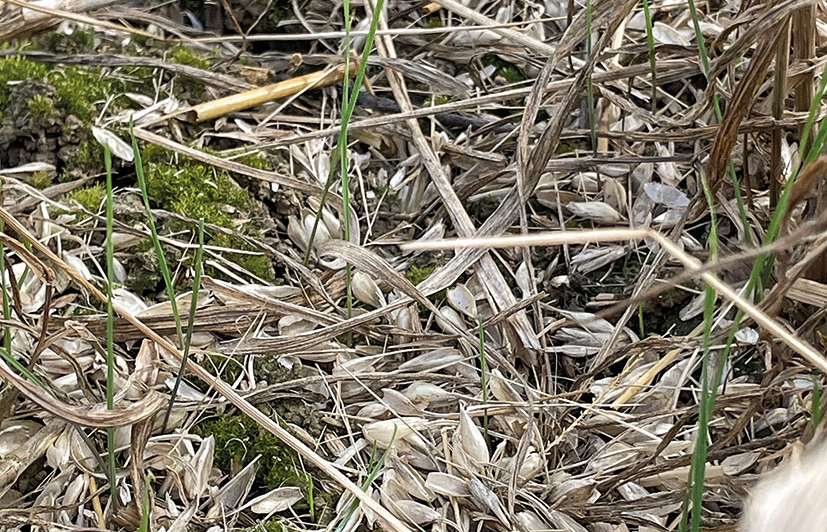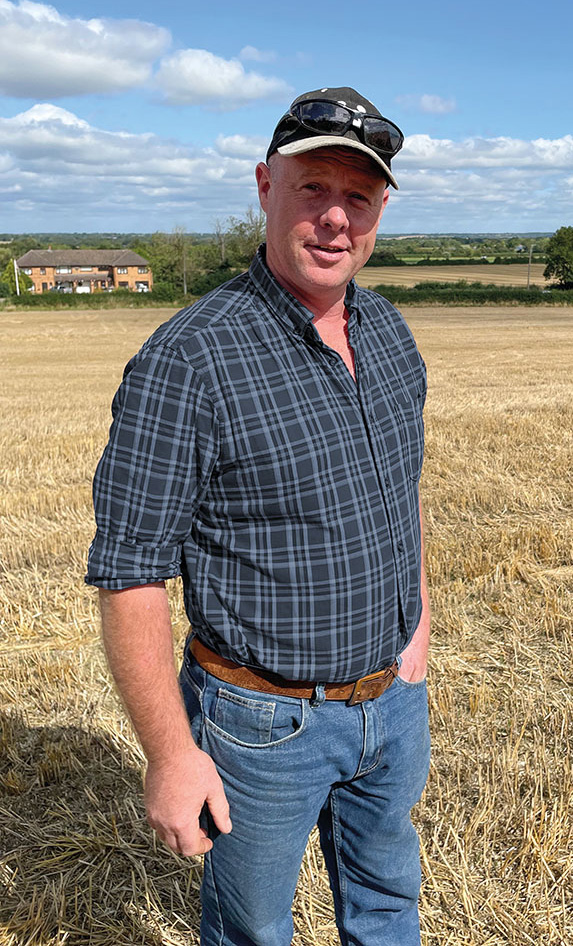Adjuvant helps to keep crops free from black-grass
23rd August 2024
Despite a high-pressure weed year, a Warwickshire grower has been able to keep crops fairly clean by optimising chemistry with an adjuvant.

Farming 243ha near Southam, Warwickshire, black-grass has been a long-standing challenge to Jon Sensecall’s arable operation, with cropping consisting mostly of combinables, alongside maize which has been grown for the past two years after struggling with producing consistent oilseed rape crops.
Looking at the current season, Jon says he was one of the lucky ones who managed to get winter crops in and established. “We got everything in the ground, except our beans,” he explains. “Some of it I wish we hadn’t drilled, as we pushed it a bit the day before the rain and we lost a few headlands and parts of fields. That said, of the 222ha of wheat, we’ve probably lost about 10ha in total – which doesn’t feel that bad.”
He was also successful with getting his pre-ems on; however, that is where the luck stopped, and Jon says they did not turn a wheel until the spring.
“To be honest, I’d been really worried about the black-grass all winter,” he recalls. “While we have got some black-grass, I’m not as disappointed as I thought I may be with the control that we’ve got.”
A robust programme
Jon pegs this to his robust herbicide programme — which comprises Luxinum Plus (cinmethylin) followed by a straight flufenacet with some diflufenican — but also the inclusion of specialist adjuvant Backrow Max in the tank mix, which he has been using since it first launched.
“We normally get a peri-em and a fair bit of Avadex (tri-allate) on too, but we just couldn’t move a wheel – as most people around the country found.

“We’ve used Backrow Max in the tank mix since it was first launched, following recommendations through Agrii’s trial work. With these kind of products, you do get questions about whether it is worth spending money on, but you could visibly see the difference when you were spraying in terms of the chemistry sticking to the ground.
“Anything we can do to aid that has got to be a good thing and if we think about this year, the Backrow Max must have done its job and has therefore added to the overall picture of not having as much black-grass as we thought we’d have.
“We have actually got some fields that are spotless this year – the Backrow Max must have just added to that efficiency.”
From Interagro, Backrow Max is a specialist activator adjuvant designed to power residual herbicide performance in the toughest of weather and application conditions, helping to take down yield-robbing weeds, explains Stuart Sutherland, technical manager at Interagro.
“In terms of how it does this, Backrow Max significantly reduces the number of fine spray droplets smaller than 100 microns which are the most susceptible to drift, and increases the number of droplets in the optimum size range for improved deposition and optimum spray coverage of the soil.
“What’s more, by retaining significantly more herbicide in the top 5cm of the soil compared with herbicides applied alone, adding Backrow Max ensures a longer and more concentrated presence of the herbicide in the weed germination zone in wet soils, creating a stronger barrier to emerging weeds.”
Adapting the plan
The effectiveness of this year’s control, despite the tricky season, has given Jon food for thought in terms of how to adapt the future strategy.
“We’ve had a real concerted effort on our black-grass over the past 15 years, and made some real improvements, but I’m starting to question now whether we need to do a peri-em application across the whole farm,” says Jon.
“Historically, we’ve just gone out and done it, but this year we’ve proven in some fields that if our pre-emergence goes on really well – incorporating aids like Backrow Max to optimise that chemistry – that we can cope without a peri application.
“The challenge with this will be that if when we get there the soil conditions aren’t quite right for the pre-ems, we won’t get such good coverage. It’s all dependent on the weather, but I think where we can, we’re going to start pulling some of these peri-ems.”
As Jon highlights while this approach may be effective in some situations, Stuart adds that it is important not to overlook the opportunities within a peri-em application, particularly in a challenging year or where a high black-grass burden is anticipated.
“Peri-em applications offer a second bite at the cherry, particularly when there is more dormancy or secondary weed flushes, as we’ve seen reported this year. Crucially, they also avoid having to fall back on a fire brigade treatment post-emergence which are seldom as effective, largely down to resistance.
“Achieving good weed control is particularly complex in seasons like the one we find ourselves in, but by teaming good chemistry with a proven adjuvant and applying it at the right time, growers still can get results within their wider IPM approach.”
For more information on Backrow Max visit the Interagro website.
Read more arable news.
